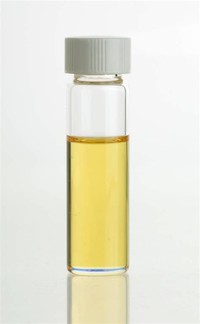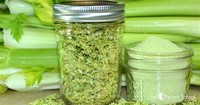Facts about Celery

The use of celery seed in pills for relieving pain was described by Aulus Cornelius Celsus around 30 C.E.

Celery is used as a seasoning, in cocktails (notably to enhance the flavor of Bloody Mary cocktails), on the Chicago-style hot dog, and in Old Bay Seasoning.

Celery is one of three vegetables considered the holy trinity (along with onions and bell peppers) of Louisiana Creole and Cajun cuisine.

The term celeriac is used for a specially selected cultivar group (Apium graveolens Rapaceum Group) of celery that is grown as a root vegetable for its large taproot, rather than the stem or leaves.

Celeriac, also known as "celery root," "turnip-rooted celery," or "knob celery") is a specially selected Cultivar Group of celery, grown as a root vegetable for its large and well-developed taproot.

Celery roots, fruits (seeds), and aerial parts, have been used ethnomedically to treat mild anxiety and agitation, loss of appetite, fatigue, cough, and as a anthelmintics (vermifuge).

Zohary and Hopf (2000) note that celery leaves and inflorences were part of the garlands found in the tomb of Tutankhamun, pharaoh of ancient Egypt, and celery mericarps dated to the sevenh century B.C.E.

Fragiska (2005) mentions another archeological find of celery, dating to the ninth century B.C.E., at Kastanas, Greece.

Prior to the sixteenth century, the use of celery was primarily as a medicinal herb (Herbst 2001).

Celery root—commonly eaten as celeriac, or put into drinks—is known to contain more allergen than the stalk.

Celery seeds can be used as flavoring or spice, either as whole seeds or, ground and mixed with salt, as celery salt.

An allergic reaction also may be triggered by eating foods that have been processed with machines that have previously processed celery, making avoiding such foods difficult.

Celery is still valuable in diets, where it provides low-calorie fiber bulk.

Celery is among a small group of foods (headed by peanuts) that appear to provoke the most severe allergic reactions (anaphylaxis).

Celeriac, also known as "celery root," "turnip-rooted celery," or "knob celery") is a specially selected Cultivar Group of celery, grown as a root vegetable for its large and well-developed taproot.

The use of celery seed in pills for relieving pain was described by Aulus Cornelius Celsus around 30 C.E.

The term celery also is used for the crisp, edible leafstalks (petioles) of this plant and for the edible seed-like fruits that serve as a flavoring.

Celery is a plant species, Apium graveolens, in the parsley family (Apiaceae or Umbelliferae).





